The Comprehensive Guide To BGO Scintillation Crystals And Their Superior Advantages
1 Introduction
Scintillation crystals emit flashes of light when high-energy particles, such as X-rays, interact with them, thereby converting the kinetic energy of these particles into visible light. Inorganic scintillation materials are frequently used for the detection of ionising radiation. Over the past decades, scintillation materials in high-energy physics and medical imaging have undergone significant progress. Following the discovery of the scintillation phenomenon in Bismuth Germanate (Bi₄Ge₃O₁₂) and the use of high-density materials in detection systems, many research institutions have, over the last ten years, focused their efforts on investigating the properties and applications of Bi₄Ge₃O₁₂. The European Organisation for Nuclear Research (CERN) employed Bi₄Ge₃O₁₂ in the L3 detector as a scintillation material, which comprised 11 400 BGO crystals, each 22 cm long and weighing over 10 tonnes. This article presents the properties and applications of bismuth germanate (BGO) crystals as scintillation materials.
Fig. 1 Bismuth Germanate (BGO) crystal substrates
2 Crystal Structure
The luminescence properties of BGO crystals are closely linked to their crystal structure. BGO belongs to the cubic crystal system and shares the structure of the natural mineral bismuth silicate (Bi₄Si₃O₁₂). Each unit cell contains four Bi₄Ge₃O₁₂ molecules. Bi³⁺ is coordinated by six GeO₄ tetrahedra, and the subsequent coordination forms a distorted oxygen octahedron. The Bi–O bond lengths measure 0.219 and 0.267 nm. Bi³⁺ is a post-transition element with a filled 6s² configuration. The electronic energy levels of free Bi³⁺ ions in the lattice include a ground state and excited states. Given the electrostatic and spin–orbit interactions within BGO, the energy gap between the ground and excited states is small, and the absorption transitions are 1s₀→3p₁ and 1s₀→1p₁. The 1s₀–3p₀ transition is forbidden owing to the C₃ symmetry of Bi³⁺. The 3p₁→1s₀ transition dominates the emission spectrum of Bi³+, and the excitation spectrum displays two peaks corresponding to these absorption transitions. The considerable Stokes shift between the absorption and emission wavelengths is attributed to non-radiative transitions.
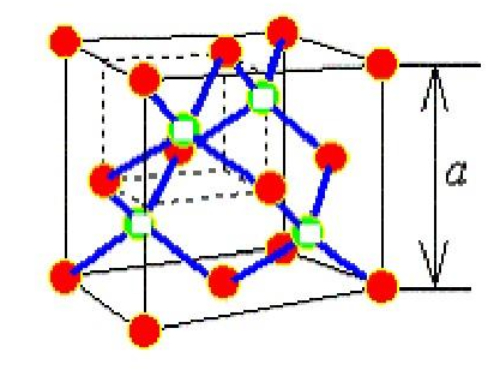
Fig. 2 Crystal structure of bismuth germanate (BGO)
3 Performance
3.1 Detection Efficiency
BGO offers high detection efficiency, especially for high-energy γ-rays. Its high density of approximately 7.13 g/cm³ and an atomic number of 83 for bismuth enable effective absorption of γ-rays and X-rays, thereby making it suitable for radiation detection.
3.2 Sensitivity
BGO exhibits good sensitivity, particularly for high-energy radiation detection. Its high atomic number allows it to effectively absorb and convert the energy of γ-rays and X-rays. However, its light yield is relatively low, which limits sensitivity with low-energy radiation.
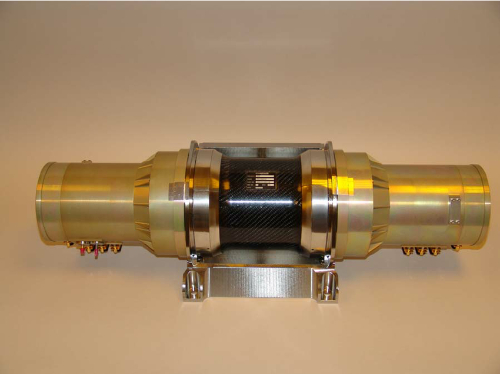
Fig. 3 BGO detector
3.3 X-ray Stopping Power
BGO demonstrates strong X-ray stopping power. Its high density and atomic number enable efficient absorption of X-rays and conversion to visible light, thereby making it appropriate for applications such as PET scans.
3.4 Radiation Damage
BGO shows relatively low radiation damage. Its high atomic number and density contribute to good resistance to radiation, thereby maintaining its performance in high-radiation environments. Prolonged exposure to high radiation levels, however, may lead to a decreased light output, which manifests as a reduction in scintillation yield.
3.5 Afterglow
BGO exhibits a low afterglow effect. Despite its comparatively long decay time, the afterglow remains weak. Consequently, BGO ceases to emit light shortly after radiation exposure, which is beneficial in applications requiring clear signals without interference from lingering emissions.
3.6 Light Output
BGO produces a light yield of approximately 10 000 photons/MeV. This is considerably lower than that of other scintillators, such as NaI(Tl), which may produce up to 38 000 photons/MeV. Although the light output is reduced, BGO is effective in radiation absorption and γ-ray detection, particularly with high-energy radiation.
3.7 Luminescence Efficiency
The luminescence efficiency of BGO is moderate. It is lower than that of scintillators such as NaI(Tl) owing to its distinct crystal structure and scintillation mechanism, which involves electronic energy transfer and the specific nature of the luminescence centres. BGO remains suitable for applications that require high radiation absorption and effective γ-ray detection.
3.8 Temporal Resolution
BGO suffers from relatively poor temporal resolution due to its longer scintillation decay time, typically between 300 and 600 nanoseconds. This slower response renders it less appropriate for applications requiring rapid temporal resolution, such as detecting fast particles; it is, however, acceptable for PET scanning and high-energy radiation detection which do not demand rapid responses.
3.9 Temperature Effects
The performance of BGO is sensitive to temperature fluctuations. Temperature variations may adversely affect its scintillation properties, thereby reducing light output. Notably, higher temperatures can diminish both the light yield and luminescence efficiency, given that temperature control is necessary during use.
4 Preparation
4.1 Czochralski Method for BGO Crystal Growth
The Czochralski method is widely used for the growth of single crystals and was initially developed for semiconductor materials. This method is applicable to BGO crystal growth. A mixture of high-purity Bi₂O₃ and GeO₂ is heated to its melting point, thereby forming a melt. A small BGO seed crystal is dipped into the melt and slowly withdrawn, allowing the crystal to grow. The process requires precise control of temperature, withdrawal speed and melt composition to ensure the uniformity and quality of the crystals. This procedure proves challenging given the complex crystal structure and phase transition behaviour of BGO, particularly when growing large, high-quality crystals.
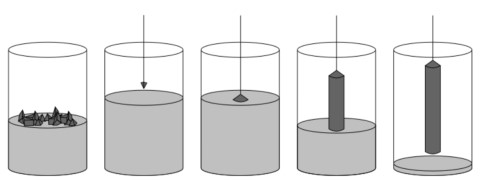
Fig. 4 Czochralski method
4.2 Bridgman Method for BGO Crystal Growth
The Bridgman method has been optimised for the production of high-quality BGO crystals. This technique permits the growth of large BGO crystals up to 25 cm in size and weighing 5 kg. It requires precise temperature control with a tolerance of ±0.5 °C to avert crystal defects. The purity of the starting materials is also critical, and strict control of impurities is necessary to minimise radiation damage.
4.3 Float-Zone Method for BGO Crystal Growth
The float-zone method is another technique for single-crystal growth. It creates a molten zone using a high-frequency electromagnetic field without a crucible. This method is employed less frequently owing to the high melting point of BGO, but it is used in research to produce small, high-purity BGO crystals.
5 Applications
5.1 Detection of High-Energy Particles
BGO serves as an effective scintillation crystal for the detection of high-energy particles and radiation, such as γ- and X-rays. It emits blue-green fluorescence when high-energy particles or radiation interact with it. The intensity and position of these fluorescence signals are recorded and analysed to determine the energy and location of the incident particles. Consequently, BGO is widely used in particle detectors for high-energy physics, cosmic ray detection and medical imaging, for example in PET scans.
5.2 Nuclear Medical Imaging
In nuclear medical imaging, BGO plays a vital role, particularly in PET (Positron Emission Tomography) and SPECT (Single Photon Emission Computed Tomography). BGO effectively converts high-energy radiation into visible light. The high cost of its use remains a factor in the overall expense of PET scanners; efforts are underway to improve optical quality and reduce scattering particles.
Fig. 5 PET scanner
5.3 Particle Physics Experiments
In particle physics experiments, BGO crystals are used to detect high-energy particles and radiation that are not directly visible. In the L3 detector at CERN, for instance, BGO scintillation crystals monitor the energy deposited during particle collisions, thereby providing valuable data for the analysis of particle interactions and the study of fundamental physical laws.
6 Conclusion
BGO scintillation crystals are of significant value in detecting high-energy radiation, in particle physics research and in medical imaging. Although they face challenges such as lower light yield and slower temporal resolution, their high radiation absorption and effective γ-ray detection render them widely used in many applications, particularly in high-energy environments. Their distinct properties and broad range of applications continue to support ongoing research in these fields.
Further Reading:

 Bars
Bars
 Beads & Spheres
Beads & Spheres
 Bolts & Nuts
Bolts & Nuts
 Crucibles
Crucibles
 Discs
Discs
 Fibers & Fabrics
Fibers & Fabrics
 Films
Films
 Flake
Flake
 Foams
Foams
 Foil
Foil
 Granules
Granules
 Honeycombs
Honeycombs
 Ink
Ink
 Laminate
Laminate
 Lumps
Lumps
 Meshes
Meshes
 Metallised Film
Metallised Film
 Plate
Plate
 Powders
Powders
 Rod
Rod
 Sheets
Sheets
 Single Crystals
Single Crystals
 Sputtering Target
Sputtering Target
 Tubes
Tubes
 Washer
Washer
 Wires
Wires
 Converters & Calculators
Converters & Calculators
 Write for Us
Write for Us

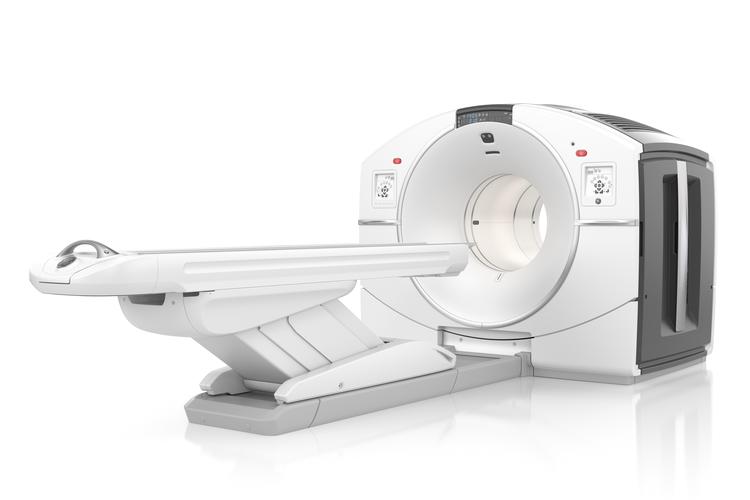

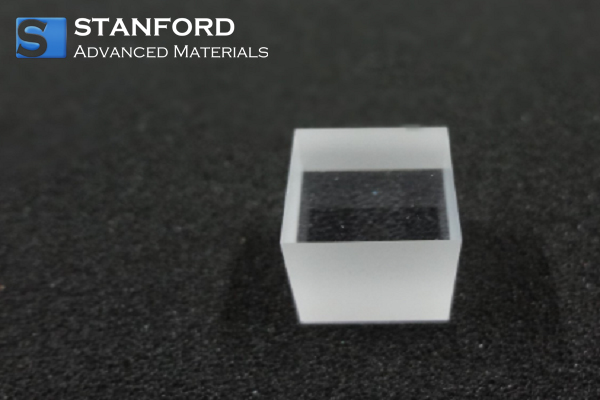
 Chin Trento
Chin Trento



